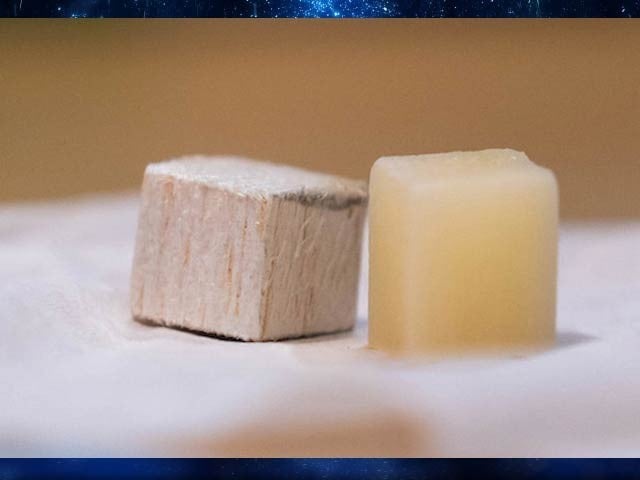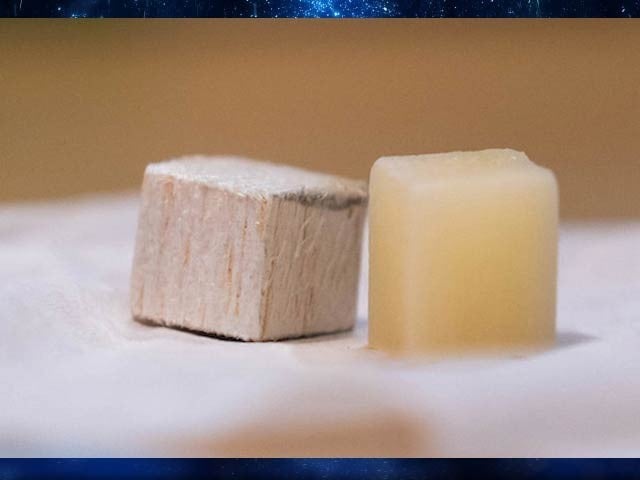
Shown on the left is normal construction wood and on the right is colorless modified wood that can absorb carbon dioxide. Photo: Rice University
New York: Research on sustainable and eco-friendly materials for building has been going on for years and now engineered wood has been engineered to be eco-friendly as it can absorb carbon dioxide.
Construction emits a large amount of carbon dioxide and the process of making cement itself is also very harmful to the environment. In this way, strong wood will not only be useful for houses and buildings, but will also absorb carbon dioxide from the sides.
Now scientists at Rice University have injected highly permeable particles into the wood used for building buildings, which are actually made of ‘metal organic frameworks (MOFS)’. For this, the underlying structure of the wood is removed.
Wood is generally made up of three materials: cellulose, hemicellulose, and lignin. Finally, the color of the wood is created by the removal of the color and it becomes colorless. The experts first removed the lignin and then added the MOF. Now the particles of MOF settle into the cellulose and become part of it.
These MOFs were first developed by Professor George Shimizu of the University of Calgary, Canada. When it was mixed with wood, surprisingly it now became stronger than normal wood and it also started absorbing carbon dioxide from the air.
In this way, engineered wood is not only stronger than before, but it has also become an environmentally friendly option that absorbs carbon. According to experts, this process is very simple and cost-effective, which gives great potential to the wood with minor changes.
(function(d, s, id){
var js, fjs = d.getElementsByTagName(s)[0];
if (d.getElementById(id)) {return;}
js = d.createElement(s); js.id = id;
js.src = “//connect.facebook.net/en_US/sdk.js#xfbml=1&version=v2.3&appId=770767426360150”;
fjs.parentNode.insertBefore(js, fjs);
}(document, ‘script’, ‘facebook-jssdk’));
(function(d, s, id) {
var js, fjs = d.getElementsByTagName(s)[0];
if (d.getElementById(id)) return;
js = d.createElement(s); js.id = id;
js.src = “//connect.facebook.net/en_GB/sdk.js#xfbml=1&version=v2.7”;
fjs.parentNode.insertBefore(js, fjs);
}(document, ‘script’, ‘facebook-jssdk’));



